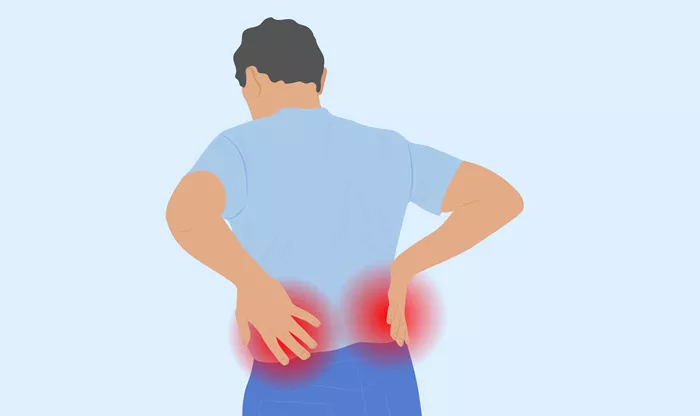While osteoporosis is often seen as a women’s health concern, experts say it affects men more than most realize — and can lead to serious consequences if ignored.
According to the Bone Health & Osteoporosis Foundation (BHOF), one in four men over the age of 50 will suffer a broken bone due to osteoporosis. Despite this, many men are not getting screened or treated.
Anne Gregg, a physician assistant at Health First, is on a mission to raise awareness and change how men think about bone health.
“Most men don’t think bone loss is their issue,” Gregg said. “But by the time they’ve broken a hip or shrunk in height, the condition may be severe. That’s why early screening matters.”
A Simple Scan Can Reveal Big Problems
The most accurate test for bone density is the DXA scan, short for dual-energy X-ray absorptiometry. It’s quick, painless, and non-invasive. Patients lie on a table while a machine scans their hips and spine. There are no needles and far less radiation than what you’d get from a cross-country flight.
“It’s simple and easy. You don’t even need to change your clothes — just avoid wearing anything metal near the scan area,” Gregg explained. “But the results can be life-changing.”
BHOF recommends DXA scans for all men over 70, and for men aged 50 to 69 who have risk factors. These include:
- Long-term steroid use
- Family history of osteoporosis
- Vitamin D deficiency
- Low body weight
- Smoking
- Heavy alcohol use
- A history of fractures after age 50
Other medical conditions, such as seizure disorders, gastric bypass surgery, or chronic inflammation that requires steroid treatment, also increase risk.
“Early signs may be small — slouching or losing a bit of height — but they may signal that the spine is weakening,” said Gregg.
Osteoporosis Is Manageable — If Caught Early
Osteoporosis doesn’t develop overnight. It often starts silently and worsens with age.
“You don’t really cure osteoporosis,” Gregg said. “But if we catch it early, we can slow it down. That’s the goal — to keep bones strong for as long as possible.”
For early cases, Gregg usually recommends calcium and vitamin D supplements.
“Calcium is important, but your body needs vitamin D to absorb it — and vitamin K to use it properly. It’s a team effort,” she said.
Good Nutrition and Exercise Can Make a Big Difference
Gregg emphasizes that diet and exercise are key in maintaining bone strength. While dairy is a common source of calcium, she also points to foods like:
- Leafy greens (spinach, kale)
- Almonds
- Fortified cereals or juices
When it comes to exercise, not all workouts help bone density. While swimming and cycling are good for the heart, they don’t support bone strength.
“You need weight-bearing and resistance exercises,” she said. “Walking, strength training, even jumping movements like squats — they all help your bones.”
The BHOF also recommends:
- Hiking
- Stair climbing
- Tennis
- Squats and lunges
These types of movement help maintain bone mass and reduce the risk of falls.
When Lifestyle Changes Aren’t Enough
If bone loss becomes more serious, medications may be necessary. Drugs like Fosamax, Boniva, and Actonel can help slow bone breakdown and stabilize density.
Gregg also pointed to newer injectable treatments like Prolia, Forteo, and Evenity, which are often used in more advanced cases.
“These medications work in different ways,” she explained. “Some help build new bone. Others slow the breakdown. Thanks to research, we now have more treatment options than ever before — and many are covered by insurance or assistance programs.”
Why Early Action Matters
Gregg says one of the most common things she hears from male patients is that osteoporosis is a concern “for later.” But that mindset can lead to irreversible damage.
“By the time you’re weak, hunched, or frail, it’s often too late to reverse the condition,” she warned. “We want men to act before that point.”
She encourages men with a family history of fractures or osteoporosis to get a DXA scan as early as age 50, and to repeat the test every two years if needed.
“Think of the scan like a ‘check engine’ light for your bones,” she said. “The sooner we spot a problem, the better chance we have to fix it.”
Small Habits Can Prevent Big Problems
Gregg also advises men to quit smoking and limit alcohol, both of which can damage bone health.
“Smoking is especially harmful to bones,” she said. “And alcohol makes it harder for your body to absorb calcium. It also increases the chance of falling.”
She urges men to think of bone health as part of their overall wellness — just like heart or prostate health.
“Staying strong into your 70s and 80s begins with the habits you build now,” Gregg said.
A Silent Disease with Loud Consequences
Osteoporosis often develops quietly, but its effects can be devastating. A single broken bone in an older man can lead to surgery, hospital stays, loss of independence, and chronic pain.
“It’s not just about preventing a fall,” Gregg said. “I


